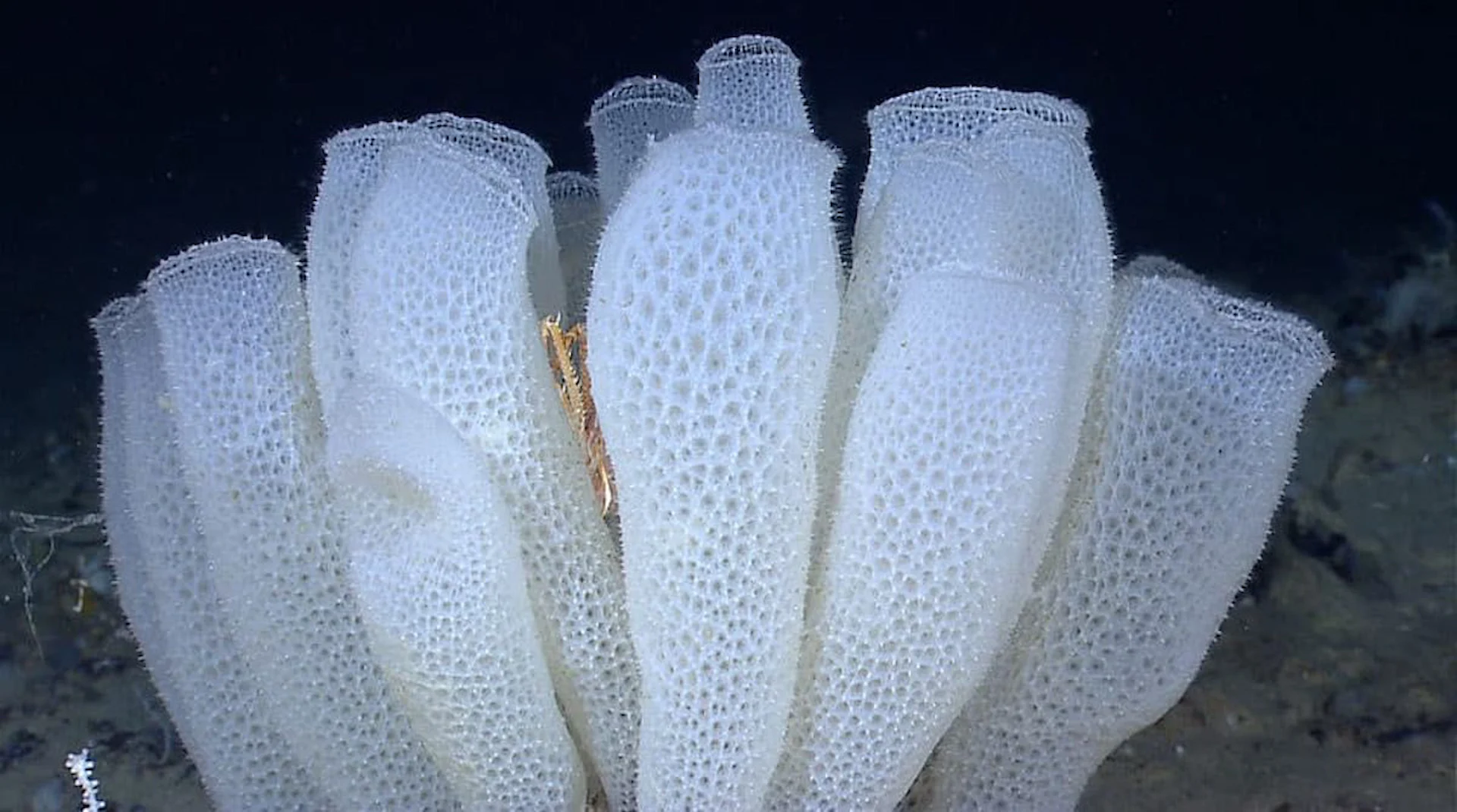What is a Glass Sponge?
Explore these deep-sea creatures that are older than dinosaurs

The temperatures in the Mid-Atlantic have taken a sharp turn this month, which means I’ve pulled out my winter coats from storage… and found multiple things in my pockets that I was certain were lost forever. Finding something I’ve lost is truly one of the greatest feelings. So, imagine scientists’ surprise when they discovered living glass-sponge reefs—which they thought became extinct 40 million years ago.
Glass sponges have a long and interesting history. In fact, they’re some of the longest-living ocean creatures. While they may not have mouths nor eyes, they are living animals. These deep-sea dwellers are named for their skeletal-like structures that resemble glass, and their tissues contain particles, called spicules, which are made of silica. Some glass sponge species produce large spicules that become fused together and form what can only be described as “glass houses.”
Get Ocean Updates in Your Inbox
Sign up with your email and never miss an update.
The majority of glass sponges are commonly found deep beneath our ocean’s surface, firmly attached to the sea floor or other hard surfaces. They have thousands of tiny holes all over through which water constantly flows, and they feed on plankton and bacteria filtered from this water flow.
Often, these glass-house structures serve as homes for other ocean creatures. As they grow, glass sponges connect to and gain support from one another, creating strong configurations known as reefs. Even after the sponges die, their structures remain intact. Some reefs have even grown as high as a six-story building!
When it comes to reproduction, glass sponges release miniscule larvae, or “babies,” into the water. These larvae are carried by currents and once they land on a hard surface, like a rock, reef or another glass sponge, they grow into a small imitation of their “adult.”
Thought to be extinct, glass sponges first appeared more than 570 million years ago, even before dinosaurs, while the first glass sponge reefs were formed around 220 million years ago. They appeared to die out about 40 million years ago … that is, until 1987 when a team of scientists made an incredible discovery on the ocean floor of the Hecate Strait in Canada, becoming the first-ever humans to see a living glass sponge reef. They likened the discovery of the 9,000-year-old reefs to “finding a herd of dinosaurs wandering around on land.” Prior to this unearthing, humans’ only knowledge of glass sponge reefs were from fossil cliffs found across Europe. This ancient stretch of fossilized reef is considered the largest known animal-made structure ever created.
There’s no doubt that glass sponges are fascinating creatures, and there are many actions you can take through Ocean Conservancy’s Action Center to protect glass sponges and other marine wildlife for years to come. BONUS: it takes less time to add your name than it does to make a cup of coffee!